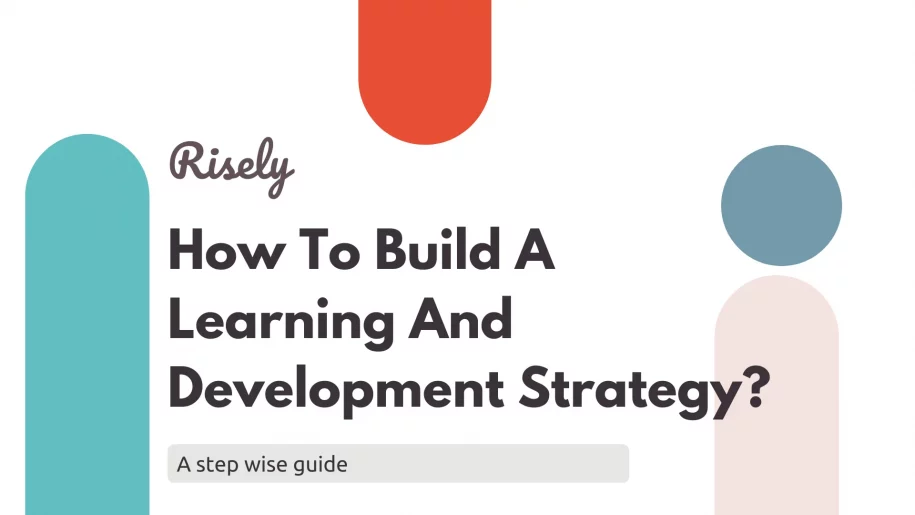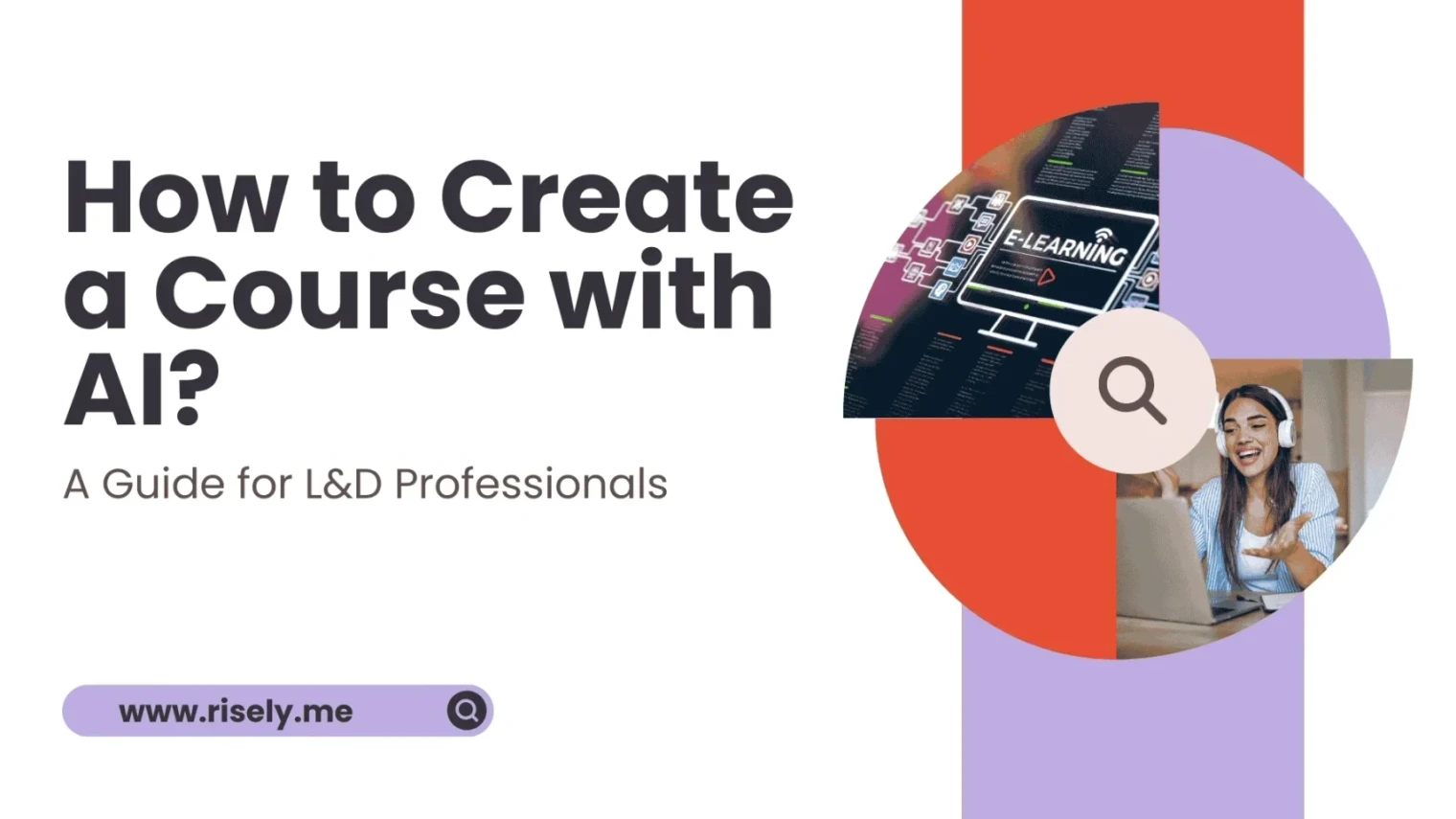How To Build A Learning And Development Strategy?
Learning and development is one of the most critical yet hard-to-get-right areas within HR. A learning and development strategy ties together everything about your plans—from the goals to the people and even the actions you are going to take. Having a solid plan for learning and development is key not only to drawing in top-notch talent but also to boosting the engagement and productivity of employees, which in turn helps meet company objectives. A successful approach to learning and development does more than just offer basic employee training. It provides chances for professional growth, helps people develop new abilities, and ensures these educational efforts support the bigger picture of your company’s goals. The goal here is to create an environment where everyone is encouraged to continuously learn better themselves. This blog will develop an effective strategy that matches your company’s aims while promoting staff advancement. When you finish reading, you will know:- What’s an L&D strategy, and why it matters?
- What goals can you achieve, and how do you set them?
- What are the common learning methods and designs?
- How do you design an effective learning and development strategy for your team?
What is a Learning and Development Strategy?
A Learning and Development (L&D) strategy is a comprehensive plan designed to improve individual and organizational performance through the continuous growth and development of employees’ skills, knowledge, and abilities. This strategy aligns with your organization’s overall goals and objectives and ensures that employees have the necessary tools and opportunities to excel in their roles.How does a learning and development strategy impact your team?
L&D strategies are crucial for ensuring a company’s success because they match learning with the business’s goals. A good L&D strategy means a plan is in place to help employees improve their jobs, which improves the whole organization. But is that all? Absolutely not! Learning and development plans have a strategic role to play; primarily, it can create an impact at three levels:Organizational level
First, learning and development boost the value of your human capital. You get employees who are ready for the challenges of the present and the future. It also ensures greater employee loyalty, engagement, and satisfaction. What’s the ultimate result? Great talent sticks with you, and turnover reduces, and you can attract better prospects.Department level
At the team level, a good learning and development strategy is the best boost to employee performance. Picture a manager getting training for effective delegation or a team member building their functional skills. All of it boils down to better performance and productivity. It also curbs internal tensions, creates shared experiences, and prepares the pipeline for succession planning.Individual level
Employees cherish valuable workplace learning opportunities, especially when they support their growth ambitions and needs. For the new generation of talent in the market, learning and development opportunities are among the top three considerations before choosing a job. Thus, with a solid learning and development strategy, you can unlock a great employee experience, high satisfaction, and a long-term career for them. Let’s narrow this down further.What does a learning and strategy do for you?
- Align employee learning and development plans with the strategic goals of the organization by overcoming the skill and competency gaps in your organization.
- Build resilience and future readiness in the organization’s human capital, thus safeguarding from redundancy.
- Create effective employee development initiatives by taking care of the suitable modes of learning, content, and distribution.
- Keeps the workforce prepared to tackle new challenges and enable internal mobility by creating a viable talent pipeline.
- Demonstrate efforts toward employee well-being and growth, thus enabling a culture of learning and earning employee loyalty.
Learning and Development Strategy Template
A complete framework by Risely to evaluate and re-energize your organization’s growth.
Building a Solid Learning and Development Strategy
A good plan makes sure we know exactly what skills we want folks at work to learn. These should match up with both what the company wants and what employees feel they need. It lays out the steps and tools needed for these learning goals, acting like a map that keeps everyone moving forward.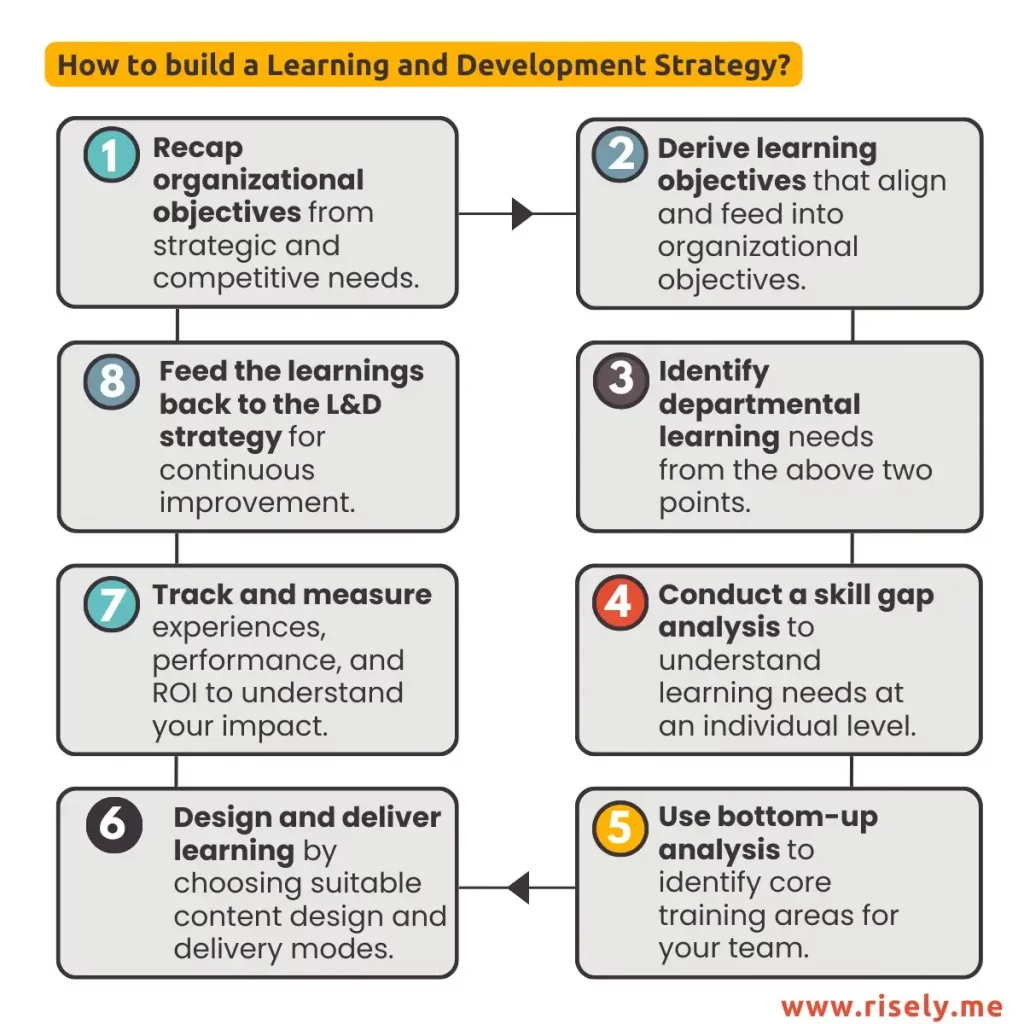
#1 Recap Organizational Objectives
Where does your learning and development strategy begin? At the strategic goals of your organization. Think of what your company wants to achieve in the next year, the next five years, etc. There are multiple considerations here. For instance, AI is entering many industries, even unexpected ones like people management. Is expertise in that area something valuable for your team? Technological advancements and evolving job roles are some of the many factors that shape your learning and development strategy. There’s more you will need to think of, like:- What are your company’s goals? Your organization’s direction will define the mix of skills and competencies you will need to succeed. Get in touch with the vision and goal setters to understand what your future looks like.
- What are your competitors doing? People can be the differentiating factor between an average and an amazing company. Are your competitors investing in talent development across innovative or impactful areas? Keep an eye on what can make you special.
- What do the stakeholders think? We are considering the senior management who need to approve plans and sanction budgets, the middle managers who will be critical to implementation, and even the individual employees who will undergo training—each of these players has a goal and vision they would love you to fulfil.
- What’s the climate? Rains need an umbrella, but sunscreen might save you on a rather sunny day. Keep an eye on the factors that can impact your business (as per the PESTLE framework) and align your learning and development strategy with the wider world.
#2 Derive Learning Objectives That Align and Feed Into Organizational Objectives
Alright, now you know what your organization wants. The next question is: How can learning and development do it? From the key organizational objectives, you will need to derive learning objectives. For example, if your organizational objective is to expand into new markets, your learning objective can enhance cross-cultural communication skills. Otherwise, if your organization wants to improve product quality, you might want to check out learning and development methods to gain knowledge of quality control methods and Six Sigma principles. You can also examine skills that you want people to strengthen in addition to competencies or specific areas. This means figuring out which skills people need to help reach those business goals and ensuring that training sessions boost these abilities in team members. Thus, before saying yes to anything on the learning and development strategy, play the devil’s advocate and ask yourself: is this adding up to the goals outlined in #1?#3 Identify departmental learning needs
At this point, you are one level down from the three-step framework we started with. After outlining the learning goals at an organizational level, the next step is to break them down into departmental learning goals and plans.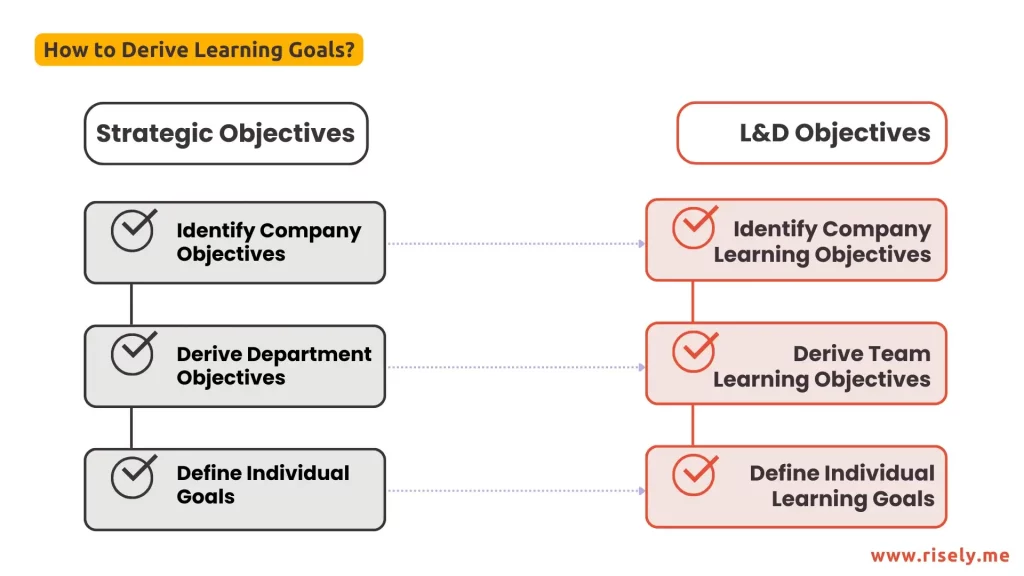
- HR department: If you hire people in the new market, there are legalities and environments to assess before forming compensation packages that meet local expectations. Recruitment could need a new strategy.
- Marketing: It includes compliance with new laws and rules, gaining know-how of societal norms, and language skills to create content in a familiar language for the new market.
- Tech: There are cybersecurity laws, vendors in the new market, infrastructure limitations, and so on.
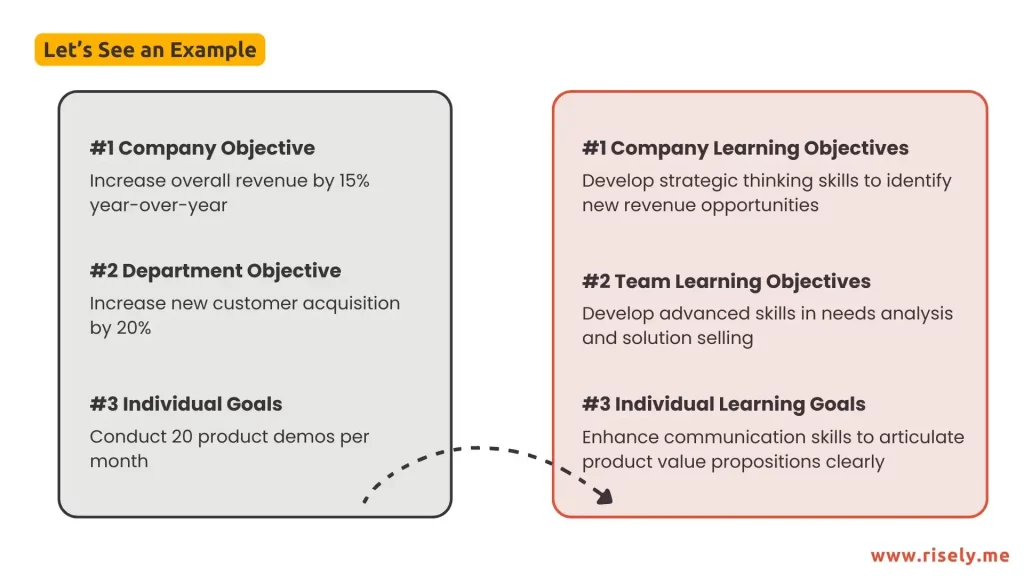
#4 Skill Gap Analysis
A skill gap analysis is the process by which organizations can assess the gap between the skills they need and their current skills. You can do this at the team or individual level to get high-level or precise results. Essentially, this exercise informs how much of a gap needs to be bridged before moving toward your goals. Further, you can classify where to work and fine-tune your L&D strategy accordingly. Simply put, a skill gap analysis should track needs across: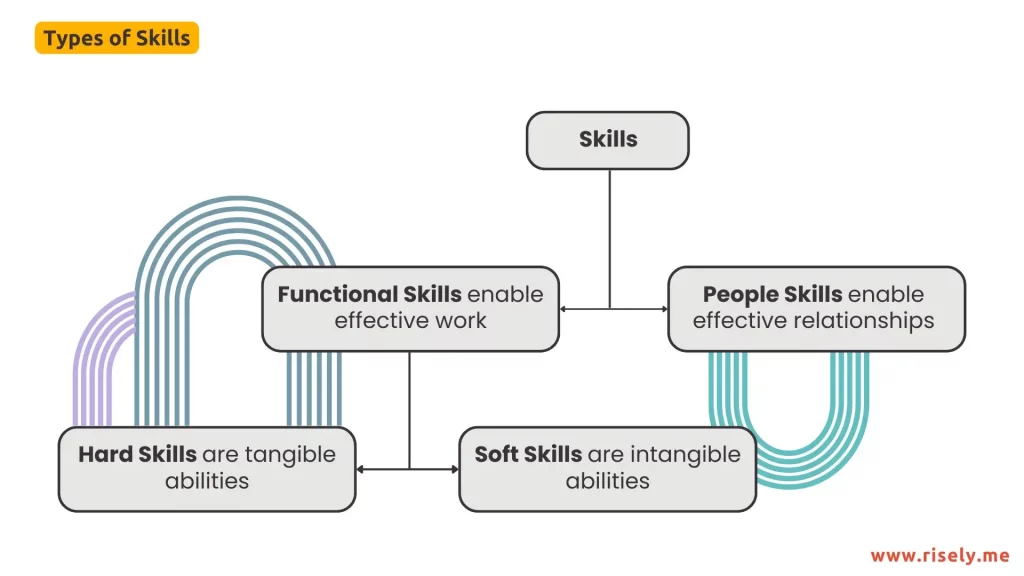
Functional skills
These skills directly impact job performance. We can further divide functional skills into two categories –- Hard skills: They include hard skills like technical know-how and tangible abilities like proficiency with a particular coaching language, software tool, or writing ability.
- Soft skills: The other part, soft skills, includes non-technical areas like objection handling in a sales team or adapting at speed.
People skills
These skills impact relationships and people. They include areas like active listening or the ability to handle conflicts involving emotional and social intelligence.How can you identify skills gaps in your team?
- Analyze performance reviews: Performance reviews record details about the missing competencies as well as the team members’ goals and aspirations, thus giving a great starting point for building a skill profile for them. You can also look for common themes and consult their managers to understand skill gaps.
- Feedback and one-on-one sessions: Make the most of these meetings by consulting employees on skill gaps and better understanding their needs. If you are running short on time or handling a larger organization, you can also turn to focus groups, where several employees discuss training needs together.
- Self-Assessments: These help you identify particular skills or areas that need improvement. For instance, you can look at assessments offered by Risely to examine the critical people management skills in your team.
Grab your free copy of Risely’s skills gap analysis framework now!
Inside you’ll find an easily adaptable template to track the skill needs of your team effectively.
#5 Bottom-up Analysis to Identify Core Training Areas
Now that you have identified your team members’ skills gaps, the next step is putting these together. Based on the skill gap analysis, understanding of company objectives, and forecasting future skills needed, you have many skills and learning initiatives to focus on. But budgets and time are limited. You cannot invest in all. That’s why we refine and pick the important fruits in building an L&D framework. Let’s understand this with an example. As the L&D manager, you have conducted the skills gap analysis through self-assessments and manager evaluations. At this point, you have three ideas for every employee:- Areas where they excel and could potentially teach others
- Skills crucial to their current role
- Skills they need to develop for future roles or projects
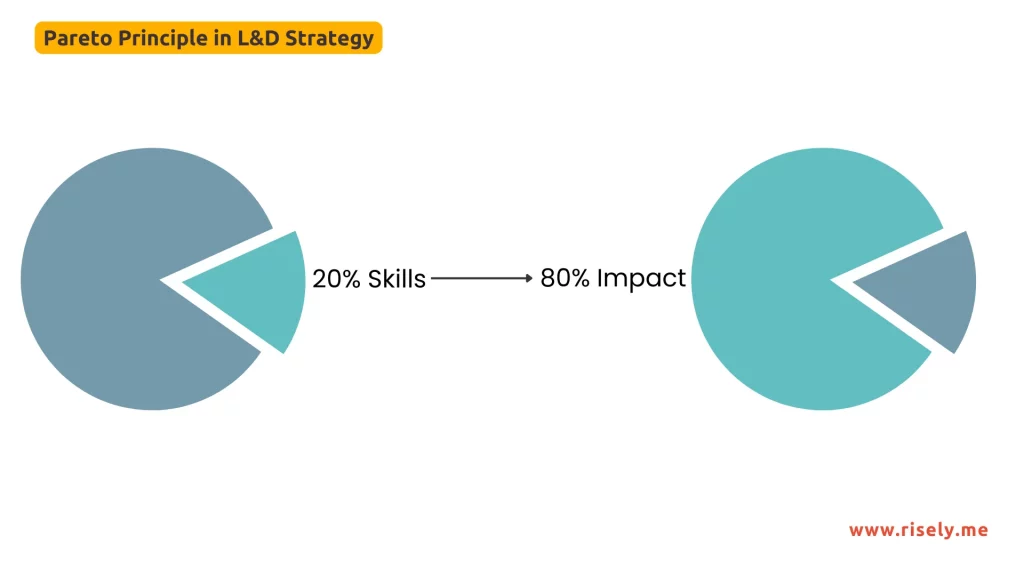
#6 Design and Deliver Learning Experiences
Till step #5, you have outlined everything you need strategy-wise. The next steps take us to implement this learning and development strategy, so let’s collect the materials for that.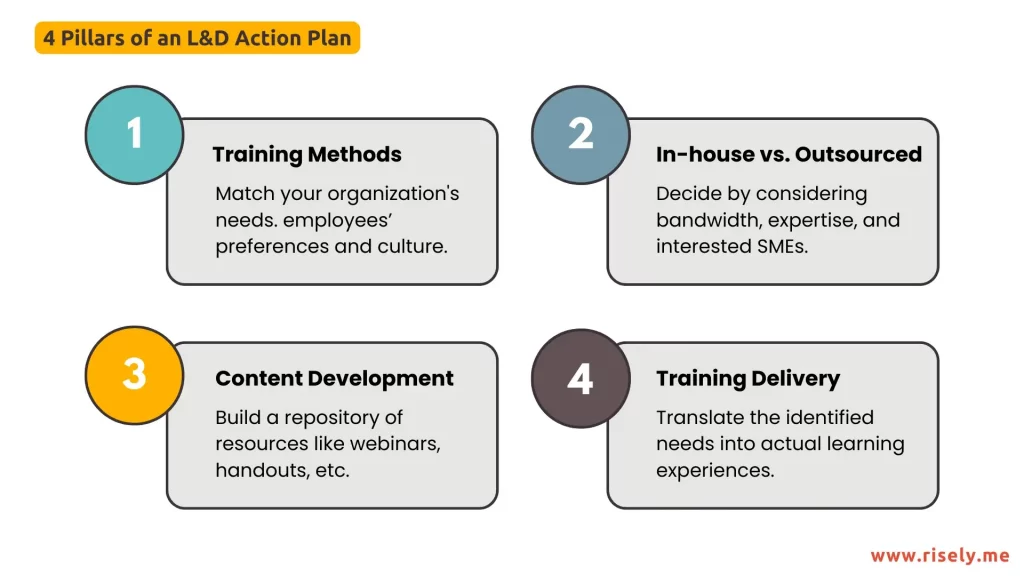
Picking the right Training methods
There are plenty of them! Your job is to figure out what matches your organization’s needs and culture. Moreover, different skills or teams could need different training methods. For instance, while a hard skill like advances in a programming language is best delivered with a combination of lectures and projects for the entire team, leadership development needs a coach who can take one-on-one sessions.Balancing In-house and outsourced L&D programs
The answer depends on your team once again. If you have the bandwidth, expertise, and interested SMEs, in-house training can do wonders as the team can access learning easily. Plus, you save some hassle. But it’s not the best fit for every context. You may need expertise that your organization does not have, or you would need people trained in delivering learning, or you could simply not have enough human resources to expend on training. Depending on these factors, you’ll need to balance between deploying the people and content you have and external ones through L&D outsourcing.Developing great content to facilitate learning
A repository of resources like webinars, handouts, and ebooks facilitates learning and development. You can also design skill and competency assessments internally based on the overall strategy. With this all comes the ultimate job of organizing, managing, and updating the organizational learning content. Cool, we have gathered the material. What’s next?Delivering the training
As with design, delivery is varied and context-dependent. You can choose from blended learning approaches that mix online and offline resources, attend seminars to hyper-focus on particular areas, or create a job shadowing program. In the newest developments of learning and development, learning delivered in the flow of work through nudges is an innovative approach shaking the world. This step is about translating the identified needs into actual learning experiences that will effectively develop the required skills and knowledge within the organization. The key is creating engaging, relevant, and impactful learning experiences that align with organizational goals and individual needs.#7 Track and Measure Experiences, Performance, and ROI
Once you have put things into action, the next step is to monitor their progress. It involves tracking employee experiences, measuring performance improvements, and calculating the training initiatives’ return on investment (ROI). First, you will have to examine the reception of your learning and development strategy. The primary question is whether it resonated with your employees. If not, then there are certain improvements in learner experience that you can make. Again, returning to the employees can help you understand what’s happening and how to tackle it. This exercise is known as collecting training feedback, which you can do immediately after the learning is delivered and later through surveys or discussions. Then, could you observe any behavioral changes as the learning took place? The right place to search for this impact can be performance reviews, everyday instances in the case of soft skills, etc3. Remember the goals you set in early steps, you need to track against those. Pre and post-training assessments are a great way to handle this. Ultimately, comes the important part of the equation: evaluating the ROI of training. It is a critical metric, as it lies at the core of your evaluation as a function within the organization. Training effectiveness in terms of visible impact on employees is one part. Also, think of the costs of initiatives and what you get in return. If the balance seems off, it’s time to head back and tweak some things in the initial steps.#8 Feed the Learnings Back to The L&D Strategy
All done? Pretty much. As we saw in our example, we had cross-cultural communication training. Let’s assume a couple of participants felt it was lacking and they were unprepared to handle a real-life situation. You went back and evaluated the learning plan for that specific area, only to find that it was delivered primarily with lectures. There were no coaches to guide through conversations or enable role plays for practice. You can go back and add them now because you know that the need is present. This final step closes the loop by using the insights gained from the implementation and measurement phases to refine the strategy. Depending on the outcomes, you might need to revisit the organizational objectives (step 1) or just adjust the learning objectives (step 2).Learning and Development Strategy Template
A complete framework by Risely to evaluate and re-energize your organization’s growth.
Learning and Development Strategy Examples
Let’s have a look at what major companies are doing with their learning and development strategies in these examples.Making an impact with peer learning at Google
The company behind this brilliant idea is not unknown. In fact, you are likely availing yourself of its services right now. Google has a peer learning program called Googlers-to-Googlers, abbreviated as g-2-g, that focuses on delivering learning to your peers. The idea is simple: whatever area an employee is passionate about, they can teach to others around them. It’s a voluntary teaching network with thousands of members and hundreds of subjects being covered. The best part is that the buck doesn’t stop at learning: this program adds value in many ways and stops you from getting into the perpetual debate of formal vs informal learning.- It allows people to cut down monotony by investing up to 20% of their time into teaching and mentoring others in an interesting area. Thus, employees are genuinely fulfilled with their workplace experiences.
- It makes learning accessible to all, even in areas where they might not be able to explore conventional learning opportunities. For employees, it opens new doors, leading to internal mobility and growth.
- And lastly, there’s the aspect of having a community and support that meets you where you are. The program facilitates high-trust relationships among peers, which enhance employee loyalty.
Keeping the employee at the center at Salesforce
Salesforce leads the training game with its unique program for learning from anywhere, known as Trailhead. Trailhead simplifies learning for skills in Salesforce and allied areas by enabling free learning content that users can access anytime. With this come two additional benefits:- First, it brings recognized credentials. Upon taking up assessments, the learners can earn globally acceptable credentials, a major factor motivating learning at work.
- Second, learners can join a global community that supports and guides each other. The sense of belonging and community is another factor greatly improving the program’s reception and success.
Democratizing data science at Airbnb
In their own words, data is at the center of everything at Airbnb. Every employee needs those skills, and that’s how Airbnb’s data university was born, with a motto to take them to every employee amid rapid expansion. When this happened, there was momentum to work with, and that’s how the learning and development strategy was made with a focus on scaling and accessibility. With a strong aim to reach every employee, here’s what the data university got right:- They started from the basics and created over 30 classes on different topics. This allowed the team to explore topics from foundation to advanced levels as they felt comfortable. The learning was designed to meet the learner where they were.
- Airbnb did this with the help of their in-house data scientist, who came with the most experience. As a result, they leveraged internal resources and eventually supported the program with volunteers. It resulted in a sense of belongingness.
What Drives Success? Building the Enablers of an L&D Strategy
So far, we discovered some key steps in developing a learning and development strategy. Then, we proceeded to look through some examples of L&D strategies. Did you notice something more between this? What was the defining factor in the three success stories we read? Let’s explore the enablers of a learning and development strategy or the long-term prep you need to do before setting a learning plan in place.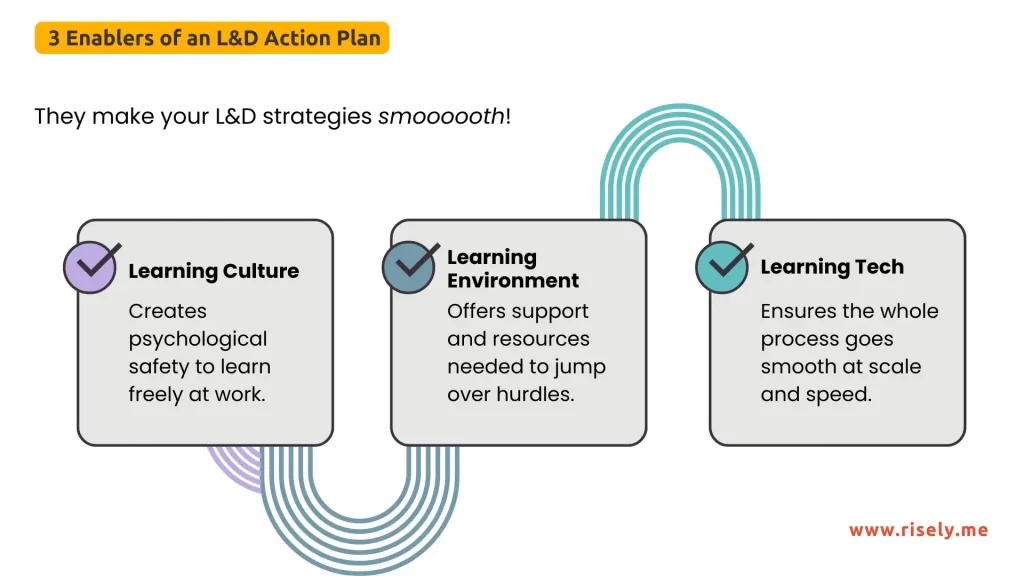
The Team Culture Needs to be Learning Ready
Is your culture ready for learning? That’s one question you need to ask before heading toward plans and modules. Organizational learning culture impacts learning at all levels, be it the program’s reception, engagement, or ultimate impact. As per McKinsey, embedding L&D strategies into the culture fulfills the vision and long-term goals. Otherwise, there would be resistance and roadblocks on the way. What does a learning-ready culture look like?- Your team is open to asking questions, accepting that they do not know certain things, and expressing interest in learning.
- Your leadership actively participates in learning through on-hand presence during sessions and putting L&D as a strategic priority.
- At a team level, mistakes mean opportunities to learn. Skill gaps are discussed, planned, and filled.
- Supplementing this, mentorship and coaching are considered people management competencies, and team leads are encouraged to support others.
- Your employees are recognized for learning new things. This recognition could take the form of better opportunities and keeping the talent pipeline aligned with their learning.
- Learning budgets are accessible and available to all team members.
- The impact of learning is measured and optimized. It’s not just a box to tick with one webinar a month.
Provide an Environment That Enables Learning
In the next step, we need to look at the hard metrics and ask ourselves again – is this workplace ready to learn? Picture this: you have to attend a webinar after work hours. It eats into the two hours of family time you finally had after a long day. Or, you learned a new coding language, but there’s no use for it at the time. Your manager is asking what the point is. These situations are hard to face. More than that, they are demotivating and prove that the workplace is not effectively accommodating the learning and development strategy. How can you create the right learning environment at work? Think of what frames a learner at work: their desk, emails that notify deadlines, colleagues, resources, etc. This learning environment is key to a good experience. For instance, visible cues toward the role of learning in success, like a quote in a common area, can be a great nudge. For bigger workplaces, dedicated areas for learning equipped with resources are an excellent way to signal the value attached to learning. Or, as we saw in the case of Google above, this environment develops as the cultural context. When everyone around you engages in learning, it becomes second nature and propels positive peer influence.Embrace technology to make the most impact
Tech can differentiate between a good and a great learning strategy. And no, we are not just talking about an LMS! You can build a solid tech stack to support the strategy at all stages and increase its robustness in many areas. We saw this in the example of Salesforce above, which created an online solution to ensure that learning was not limited. Similarly, Airbnb reached 1/8th of its employees in its initial run as the platform worked independently of physical location. There’s more to tech in L&D than assessments. Think visualization of data and relationships across big numbers, faster update of learning content, engaging formats (quizzes, videos, downloadable cheat sheets), super-fast distribution, virtual walls of honor, personalized learning journeys, – these are just the tip of the iceberg.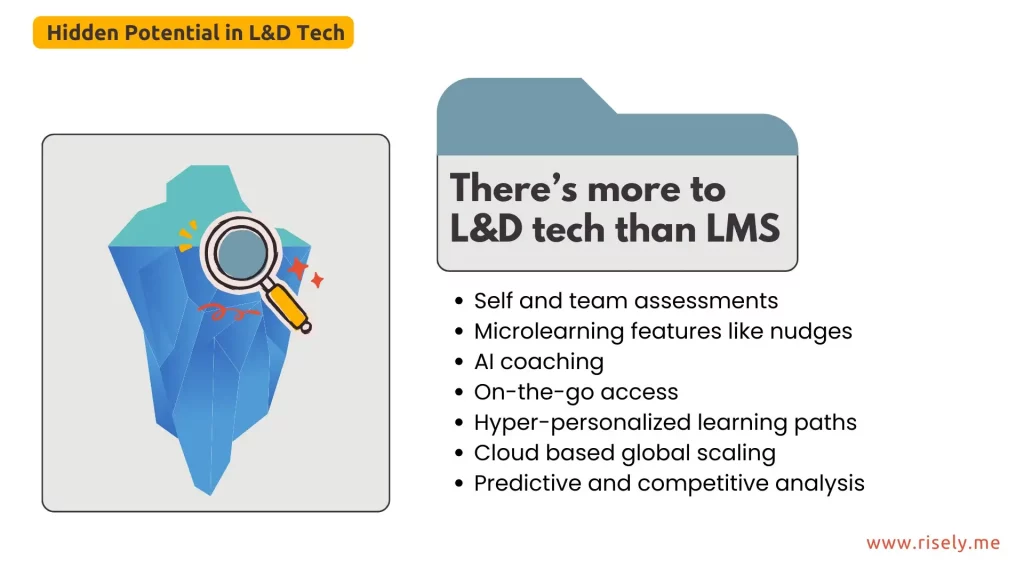
Wrapping Up
To wrap up, a robust L&D strategy is crucial for driving organizational growth and enhancing employee capabilities. By aligning L&D objectives with business goals, setting realistic targets, and implementing diverse learning methodologies, companies can foster an environment of continuous improvement. Overcoming challenges and facilitating personalized learning journeys are key to maximizing impact. Embracing emerging technologies and securing leadership buy-in are essential for a resilient L&D program. By integrating continuous learning into the organizational culture, companies maintain agility in our rapidly evolving landscape while staying aligned with business objectives as their organizational learning maturity enhances. This approach ensures the organization remains adaptable, competitive, and well-positioned for future challenges and opportunities.Free Learning and Development Strategy Template
A complete framework by Risely to evaluate and re-energize your organization’s growth.
How to Create a Course with AI: A Guide for L&D Professionals
How to Create a Course with AI: A Guide for L&D Professionals According to a McKinsey survey(1), only 11% of…
How to build a Learning and Development Action Plan ft Katie Greenwood
How to build a Learning and Development Action Plan ft Katie Greenwood Does your company’s Learning and Development (L&D) strategy…
Generative AI for Learning and Development: Getting Started
Generative AI for Learning and Development: Getting Started In 2024, organizations spent $401 billion globally on corporate training(1), yet 70%…
Future proofing a learning strategy for organizations with Inna Horvath
Future Proofing a Learning Strategy for Organizations with Inna Horvath With the advent of AI, everyone’s anticipating changes. L&D leaders…
What is Immersive Learning? A New Era in Education
In this blog, you’ll learn what is immersive learning and how it is changing training, increasing engagement, and influencing the…

